#Minnesota Astronomical Society
Explore tagged Tumblr posts
Text
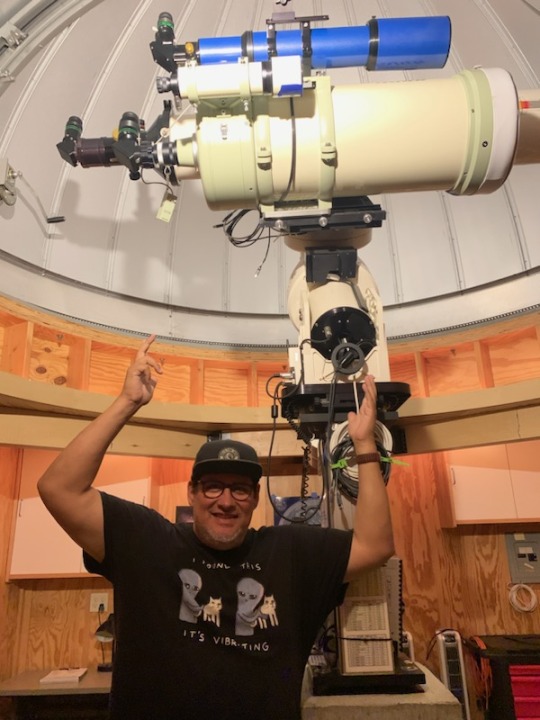
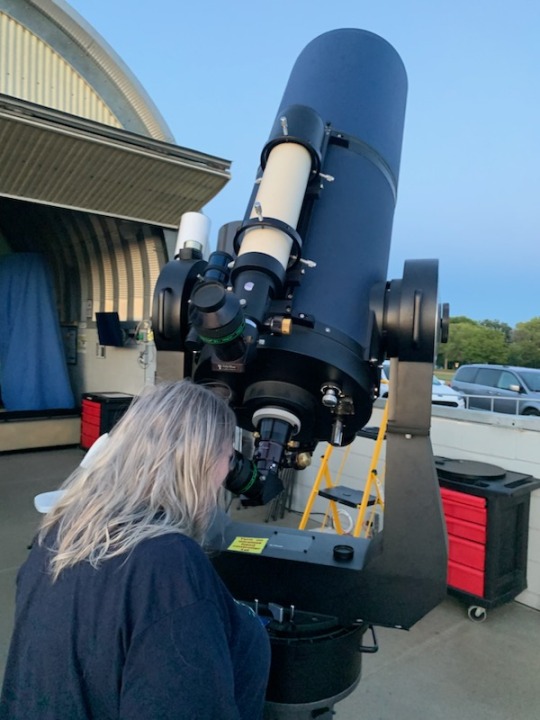


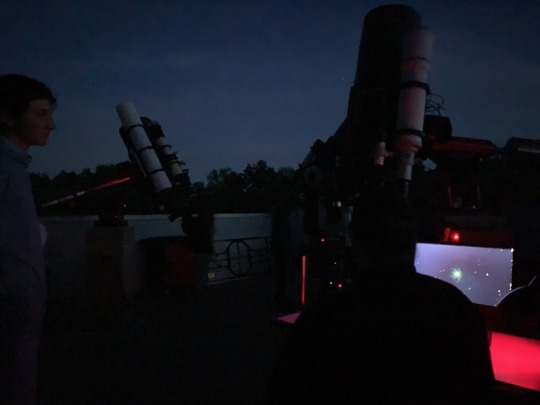

1 note
·
View note
Text
Nobody Talks About Ophiuchus

So back in January 2011, a news article from the Minnesota Planetarium Society made headlines. The article, titled "Your Astrological Sign Just Changed. Thanks, NASA," claimed that due to changes in the Earth's alignment, there should be a shift in the zodiac, leading to the inclusion of a new zodiac sign—Ophiuchus. Controversy alert, am I right?
Well, this stirred A LOT of astrological drama up in the communities back then, and it recently piqued my interest to want to know why it existed in the first place and furthermore… why nobody talks about it. Not that I'm interested in changing my zodiac and potentially MY WHOLE BIRTHCHART! I'm just a curious lil chipper, so… what's Ophiuchus—the "thirteenth zodiac's" deal anyway?
Ophiuchus, the underdog of the zodiac, is positioned along the celestial equator. The cosmic serpent bearer has been in the cosmic chorus since ancient times. But although it shares the stage with its twelve zodiac companions, it doesn't quite share the spotlight like the rest. Suddenly, it began grabbing headlines and chaos ensued. Myths that said astrology was starting to get outdated floated everywhere, and unappetizing astrological misconceptions were served for breakfast AND dinner with the side of ignorance and muggle mentality.

But the truth behind all of the Ophiuchus attention was found in the origins of the traditional twelve-sign zodiac system itself. After hopping onto the astro-time machine, I found out that the Babylonian astronomers were the first WESTERN celestial scribes, dividing the sky into twelve equal acts, each starring a constellation along the Sun's yearly journey—the apparent path of the Sun across the sky, or simply known as the Ecliptic. The Greeks (particularly the Hellenistic Greeks) later picked up the script and named the constellations—Aries, Taurus, and Gemini, giving birth to our twelve main characters. This celestial drama then evolved over centuries; each zodiac sign became associated with certain symbolic meanings, qualities, and characteristics. These associations were often based on observations of the natural world, seasonal changes, and the perceived influence of celestial bodies on Earth, becoming the astrological playbook we now know.
The thing is, though, that the Babylonians knew of Ophiuchus back then; they just chose not to include it in the big 12 because it disrupted something they held at great value—symmetry. They wanted each zodiac to take up 30 degrees in the sky—that's the answer to why Ophiuchus is not included in traditional astrology. Yup, nothing fancy. The Babylonians just had a pet peeve, I guess, lmao.

But for those curious, here's some information on Ophiuchus:
Lies between Scorpio and Sagittarius
Represented by a man bearing a snake
People born under this sign of Ophiuchus fall under the archetype of – the healer, the knowledge seeker, the one with a magnetic charm. While not your typical zodiac star, folks associated with Ophiuchus might bring a dose of wisdom and a knack for balance to the celestial party. Picture them as the cosmic wanderers, curious about life's mysteries and blessed with a natural knack for attracting good vibes. BASICALLY Ophiuchus is the child of Scorpio and Saggitarius *giggles in satisfaction* knowing that makes me so happy though :}
~~~~~~~~~~~~~~~~~~~~~~~~~~~~~~~~~~~~~~~~~~~~~~~~~~~~~~~~~~~~~~
Thanks for stopping by!

#spirituality#zodiac#astrology community#astrology readings#ophiuchus#astrology#astrology insights#astrology blog#astro observations#astro notes#natal astrology#astroblr
66 notes
·
View notes
Text
Dannymay2024 Day 4: Wander
Places I can see some of the ghosts visit. Going on the idea of Amity Park being in Minnesota
Ember Mclain: First Avenue

Sidney Poindexter : Science Museum of Minnesota

Penelope Spectra: Four Seasons Hotel

Ghost Writer: The State Theatre

Desiree: Mizna, Arab arts organization

Kitty: Minnesota Roller Derby

Johnny 13: The Dog House Bar & Grill

Klemper: Ice Castles

Vlad Masters/Plasimus: France 44 Cheese & Meat .

Danny Fenton/Phantom: Minnesota Astronomical Society, Eagle Lake Conservatory .

What do u think? What kind of places could you see the ghosts go to? I’d love to know💖
#danny phantom#dannymay2024#dannymay#danny fenton#kitty#johnny 13#klemper#desiree#dp desiree#ember mclain#sidney poindexter#vlad#dp kitty#dp ember#dp klemper#Dp vlad#Vlad plasimus#Dp#phandom#Penelope spectra#spectra#ghost writer#Day 4#wander#minnesota
27 notes
·
View notes
Text

Pseudo-3D cubes technique could alter our understanding of cosmic structures, central black holes of galaxies
Researchers at the University of Minnesota Twin Cities College of Science and Engineering have developed a new technique that reconstructs two dimensional (2D) radio images–visual representations created from radio waves–into three dimensional (3D) "Pseudo-3D cubes" to help better understand objects in the universe.
The work is published in the journal Monthly Notices of the Royal Astronomical Society.
Traditionally, when radio images are captured in a 2D format, the images may not allow scientists to infer what the object looks like in 3D. Transforming these images into a 3D space can help better understand the physics of galaxies, massive black holes, jet structures, and, ultimately, how the universe works.
The researchers looked at polarized (radio) light—light that vibrates in a specific direction. We experience polarized light when we look at the glare from sunlight off a highway—it vibrates horizontally. We then use polarized sunglasses that allow only vertical vibrating light to pass and the glare disappears.
The research team made use of an effect called Faraday rotation, which rotates the direction of the radio polarized waves, depending on how much material they have passed through. With this, they could estimate how far each piece of the radio picture had traveled, and thus create a 3D model of these phenomena happening millions of light-years away.
"We found that the shapes of the objects were very different from the impression that we got by just looking at them in a 2D space," said Lawrence Rudnick, a Professor Emeritus in the University of Minnesota School of Physics and Astronomy.
With this new technique, the researchers were also able to determine the direction of material expelled from massive black holes, look at how the material interacts with cosmic winds or other space weather, and analyze the structures of magnetic fields in space.
"Our technique has dramatically altered our understanding of these exotic objects. We may need to reconsider previous models on the physics of how these things work," Rudnick added. "There is no question in my mind that we will end up with lots of surprises in the future that some objects will not look like we thought in 2D."
Previous imagery will need to be reanalyzed using this new technique to confirm previous thoughts or bring new insights. Rudnick hopes to see this technique applied to imagery being taken in new telescope facilities around the world.
In addition to Rudnick, the team included Craig Anderson from the Research School of Astronomy and Astrophysics at Australian National University; William Cotton from the National Radio Astronomy Observatory; Alice Pasetto from the Institute for Radio Astronomy and Astrophysics National Autonomous at the University of Mexico; Emma Alexander from the Jodrell Bank Center for Astrophysics at the University of Manchester; and Mehrnoosh Tahani from Kavli Institute for Particle Astrophysics and Cosmology at Stanford University.
Data for this project came from the MeerKAT radio telescope array, a facility of the South African Radio Astronomy Observatory.
IMAGE: Researchers used a new technique to transform 2D radio images into a 3D model to better understand phenomena in our universe. Credit: Lawrence Rudnick/MeerKAT Radio Telescope
youtube
3 notes
·
View notes
Text
When, Where, and How to See the 2017 Total Eclipse in Minnesota
For the best views of the #eclipse, Minnesotans should head southwest. @UMNCSE @BellMuseum
The “diamond ring” of the 2008 solar eclipse. The Exploratorium/NASA Monday, August 21, will bring us the first coast-to-coast total solar eclipse in the United States in 99 years. While not incredibly uncommon generally—total solar eclipses can be seen from Earth every couple of years—this one is special to us, as it will cut diagonally across the entirety of the United States. Knowing the…
View On WordPress
#astronomy#Bell Museum of Natural History#Minnesota Astronomical Society#nasa#physics#Science#Solar Eclipse#space#University of Minnesota
2 notes
·
View notes
Link
Americans have been saying for a year they want to get back to normal. Tragically, they're getting their wish.
With the gradual return to public places comes a specter the country was all too willing to set aside as it grappled with a pandemic capable of killing thousands of Americans a day. Mass shootings are starting to make headlines again, and though their return is most unwelcome, they've proved to be an inextricable part of life in the United States.
The latest mass killing left 10 dead at a grocery store. For the past 12 months, Americans have been vigilant in grocery stores to avoid contagion. Monday's slayings in Boulder, Colorado, reminded them that even with pandemic hope on the horizon, they should remain vigilant for a different reason.
This is a hard thing to read, but important. Full text under the cut.
CNN | 3/24/2021 | Listen Analysis: Mass shootings signal a dubious 'back to normal' in America Analysis By Eliott C. McLaughlin, CNN
Updated: Wed, 24 Mar 2021 00:21:23 GMT
Source: CNN
Americans have been saying for a year they want to get back to normal. Tragically, they're getting their wish.
With the gradual return to public places comes a specter the country was all too willing to set aside as it grappled with a pandemic capable of killing thousands of Americans a day. Mass shootings are starting to make headlines again, and though their return is most unwelcome, they've proved to be an inextricable part of life in the United States.
The latest mass killing left 10 dead at a grocery store. For the past 12 months, Americans have been vigilant in grocery stores to avoid contagion. Monday's slayings in Boulder, Colorado, reminded them that even with pandemic hope on the horizon, they should remain vigilant for a different reason.
Americans shouldn't have to fret about dying in a supermarket, or at a spa, or anywhere for that matter. Catching a bullet should be far from their minds, but with a return to American normalcy comes the reality that anyone could die for nothing, just about everywhere.
Seven mass shootings in seven days
Just as the country is conquering a new pandemic, an old, familiar epidemic makes its return. The last week has been a harbinger of what "back to normal" means for the US.
The most recent string of senseless gun violence began March 16 when a shooter killed eight people at three Atlanta spas. The next day, a drive-by in Stockton, California, injured five people who'd gathered for a vigil.
Four people were hospitalized Thursday after a shooting in Gresham, Oregon. On Saturday, a pair of shootings at clubs in Dallas and Houston left a young woman dead and 12 people injured. Shortly thereafter, a shooter opened fire at what Philadelphia police termed an illegal party, killing one man and injuring five more.
Now, Boulder makes seven in seven days. When the gunfire at King Soopers stopped, 10 lay dead, including hero officer Eric Talley, the first policeman on the scene. His wife and seven children will pay an astronomical debt for their dad's bravery.
"Flags that have barely been raised back to full mast after the tragic shooting in Atlanta that claimed eight lives and now the tragedy here, close to home, at a grocery store that could be any of our neighborhood grocery stores," Colorado Gov. Jared Polis said Tuesday.
The King Soopers location where the melee unfolded is one of about 1,000 providers in Colorado working to repel the killer Covid-19.
Steven McHugh's son-in-law had queued for a dose of vaccine, like more than a million other Coloradoans. He was third in line, and his daughters chatted with their grandmother on the phone as he waited, McHugh said.
When the gunfire erupted, a bullet found its way to the woman at the front of the line. Her fate is unclear, as is much about Monday's shooting. Authorities haven't divulged a motive, but history tells us it won't make sense.
McHugh's son-in-law fled with the girls -- one in seventh grade, the other in eighth -- to an upstairs staffing area above the pharmacy and hid in a closet. Dozens more shots rang out, McHugh said, citing his son-in-law.
It was "extraordinarily terrifying," the grandfather told CNN, "and of course the little one's saying, 'The coats weren't long enough to hide our feet,' as they were standing behind the coats in the closet."
'A normal we can no longer afford'
The US government doesn't have a centralized database to track mass shootings, but anecdotal accounts indicate they were down during the pandemic as Americans were encouraged to stay home and many of their favorite gathering places were shut down.
Former President Barack Obama called for action Tuesday, expressing disbelief that only Covid-19 could quell the gun violence the country has long endured.
"A once-in-a-century pandemic cannot be the only thing that slows mass shootings in this country," he said. "We shouldn't have to choose between one type of tragedy and another. It's time for leaders everywhere to listen to the American people when they say enough is enough -- because this is a normal we can no longer afford."
For the mass shootings that did unfold amid the pandemic, their locations were frighteningly familiar: a Buffalo, Minnesota, health clinic; a bowling alley in Rockford, Illinois; a Wauwatosa, Wisconsin, mall; parties in Rochester, New York, and Washington, DC; and a brewery in Milwaukee where, authorities would learn later, the gunman had been employed.
Gun violence is not a uniquely American phenomenon, but part of the rich American tapestry are threads of evil and violence: people (almost always men) who use weapons (often firearms) to snuff out innocents. Sometimes they're mentally ill, but more often they're just angry or vicious.
Their reasoning -- when it's attainable -- fails to provide closure. Outrage invariably erupts after each massacre. One side demands stronger gun laws. They're labeled un-American. Their opponents tout the Second Amendment. They're labeled callous. A stalemate ensues until the next killing, then repeat.
Within an hour of the Boulder killings, the National Rifle Association tweeted the Second Amendment. It later retweeted it. Nothing more.
It should surprise no one that a special interest group champions the Second Amendment. The amendment is a promise to every American, but 15 years prior to its ratification, the Declaration of Independence brought other promises of rights deemed "unalienable."
The full guarantees of "life, liberty and the pursuit of happiness" will never be achieved by Officer Talley, Tralona Bartkowiak, Suzanne Fountain, Teri Leiker, Kevin Mahoney, Lynn Murray, Rikki Olds, Neven Stanisic, Denny Strong, Jody Waters -- or any of the thousands of victims who fell before Monday in Boulder.
'Part of the American experience'
In all likelihood, another person died by a gun while you were reading this. Despite the media's breathless focus on mass shootings, gun violence takes myriad and frequent forms.
According to numbers from the Centers for Disease Control and Prevention, the country saw 14,414 homicides in 2019 -- about one every 36 minutes -- while another 23,941 souls fatally turned guns on themselves -- roughly once every 22 minutes.
In his statement, Obama called out other scapegoats: disaffection, misogyny, hate. The United States has monopolies on none of these, though it has special brands that can be pernicious.
Sandy Phillips, who co-founded the organization Survivors Empowered to console and guide survivors of gun violence, pointed to the victims who suffer in silence, because the killings of their loved ones are seemingly not important enough for the newspapers or the nightly news.
Doubt her? Google the details about last week's shooting in Stockton, California, one of the most racially diverse cities in the nation.
"We have mass shootings in slow motion every day in this country, in other neighborhoods that never get the press, that never get the opportunity to speak out about what's happening in their communities -- and we need to change that," Phillips, who lost her 24-year-old daughter Jessica Ghawi in 2012 to gun violence in Aurora, Colorado, told CNN.
Those neighborhoods often belong to minorities, who have had a particularly rough time of the pandemic as well. It's another crushing American axiom that society's ills tend to home in on people of color, and those victims must yell so much louder to be heard.
There will be much yelling in coming days, perhaps weeks. Obama is right when he said Americans possess the ability to "make it harder for those with hate in their hearts to buy weapons of war. We can overcome opposition by cowardly politicians and the pressure of a gun lobby that opposes any limit on the ability of anyone to assemble an arsenal."
The margins are thin, though, and the complexity of that American tapestry will be on display. A Gallup poll from late last year showed 42% of Americans had guns in their homes, a number that's risen since 2019. Another Gallup query indicated 57% of Americans want stricter gun laws, a percentage that's on the decline.
Former FBI Deputy Director Andrew McCabe said "absolutely nothing" will stop the country's return to pre-pandemic mass violence if lawmakers refuse to curb access to the weaponry.
"This has become part of the American experience, and let's not forget: It's completely unique to us," he told CNN. "There's not another similar country on Earth that experiences the same number, the frequency of mass shootings as we do, and it is directly attributable to the profusion and the availability of guns, particularly high-powered assault-style weapons and how easily pretty much anyone can acquire them here in this country."
50 notes
·
View notes
Text
T. rex wasn't always at the top of the food chain. Meet what came before
https://sciencespies.com/nature/t-rex-wasnt-always-at-the-top-of-the-food-chain-meet-what-came-before/
T. rex wasn't always at the top of the food chain. Meet what came before
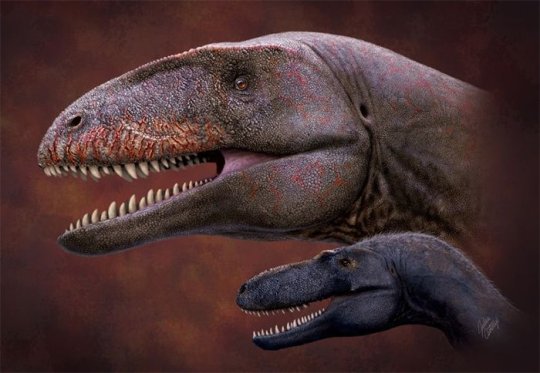
About 90 million years ago, a gigantic apex predator – a meat-eating dinosaur with serrated shark-like teeth – prowled what is now Uzbekistan, according to a new study of the behemoth’s jawbone.
The 26-foot-long (8 meters) beast weighed 2,200 pounds (1,000 kilograms), making it longer than an African elephant and heavier than a bison.
Researchers named it Ulughbegsaurus uzbekistanensis, after Ulugh Beg, a 15th-century astronomer, mathematician, and sultan from what is now Uzbekistan.
What caught scientists by surprise was that the dinosaur was much larger – twice the length and more than five times heavier – than its ecosystem’s previously known apex predator: a tyrannosaur, the researchers found.
Related: The 10 coolest dinosaur findings of 2020
The chunk of jawbone was found in Uzbekistan’s Kyzylkum Desert in the 1980s, and researchers rediscovered it in 2019 in an Uzbekistan museum collection.

(Julius Csotonyi)
Above: An illustration of the enormous carcharodontosaur Ulughbegsaurus with the smaller tyrannosaur Timurlengia.
The partial jawbone of U. uzbekistanensis is enough to suggest that the animal was a carcharodontosaur, or a “shark-toothed” dinosaur. These carnivores were cousins and competitors of tyrannosaurs, whose most famous species is Tyrannosaurus rex.
The two dinosaur groups were fairly similar, but carcharodontosaurs were generally more slender and lightly built than the heavyset tyrannosaurs, said study co-researcher Darla Zelenitsky, an associate professor of paleobiology at the University of Calgary.
Even so, carcharodontosaurs were usually larger than tyrannosaur dinosaurs, reaching weights greater than 13,200 pounds (6,000 kg). Then, around 90 million to 80 million years ago, the carcharodontosaurs disappeared and the tyrannosaurs grew in size, taking over as apex predators in Asia and North America.
The new finding is the first carcharodontosaur dinosaur discovered in Central Asia, the researchers noted.
Paleontologists already knew that the tyrannosaur Timurlengia lived at the same time and place, but at 13 feet (4 m) in length and about 375 pounds (170 kg) in weight, Timurlengia was several times smaller than U. uzbekistanensis, suggesting that U. uzbekistanensis was the apex predator in that ecosystem, gobbling up horned dinosaurs, long-necked sauropods and ostrich-like dinosaurs in the neighborhood, the team said.
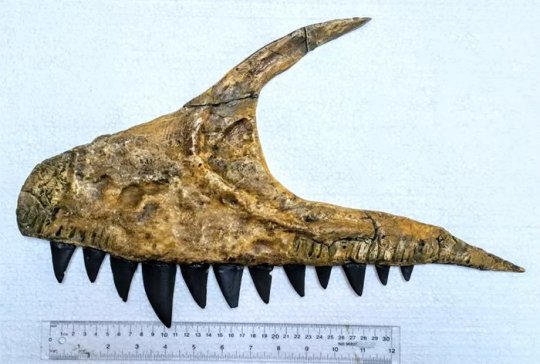
(Dinosaur Valley Studios)
Above: A reconstruction of Ulughbegsaurus’s upper jaw and teeth.
“Our discovery indicates carcharodontosaurs were still dominant predators in Asia 90 million years ago,” study lead researcher Kohei Tanaka, an assistant professor at the Graduate School of Life and Environmental Sciences at the University of Tsukuba in Japan, told Live Science in an email.
Peter Makovicky, a professor of paleontology at the University of Minnesota who was not involved in the study, agreed that U. uzbekistanensis was likely at the top of the local food chain.
“I think this bone is so big that this would have been a very large predatory dinosaur and very likely the apex predator in its ecosystem,” Makovicky told Live Science.
The U. uzbekistanensis finding is the last known occurrence of a carcharodontosaur and a tyrannosaur living together before the carcharodontosaurs went extinct, the team said.
The team found that U. uzbekistanensis has unique bony bumps above its teeth. However, it also has bony ridges on the sides of its jaw that were similar to the 79.5 million-year-old tyrannosaur Thanatotheristes degrootorum (whose name means “reaper of death“) from what is now Canada.
It’s unclear why both species have these ridges, but perhaps it’s a case of convergent evolution, when species that aren’t closely related evolve to have similar characteristics, Zelenitsky said.
The study was published online Wednesday (Sept. 8) in the journal Royal Society Open Science.
Related content:
#Nature
4 notes
·
View notes
Note
What's your view on zodiac signs? I recently discussed it with a girl who was pretty much into it and talked about waves and magnetism (which apparently can't touch you while in the womb for whatever reason) and totally thought the stars define our lives. She was also pretty sure about karma saving her once and didn't want to hear anything about coincidence and that the sun is the only star affecting her life with a sunburn at least.

QualiaSoup - Superstition
youtube
James Randi on Astrology
youtube
Professor Dave Explains - Astrology: Fact or Fiction?
youtube
Spoiler alert... it’s fiction, which becomes immediately apparent when you have the most basic understanding of how stars work, how light works and how fast it travels, how the galaxy works, and when you realize you’re not the center of it.
Clearly, she doesn’t if she’s citing “waves” and ‘magnetism.” Which somehow doesn’t affect all the metal shit we’ve built, like the planes flying in the sky or the satellites in orbit. She quite possibly thinks that astrology and astronomy are somehow related.
The correct response is to ask her specifically how “magnetism” and “waves” - and particularly what she even means by a “wave” - work in this mechanism, and specifically, how it affects biology and cognitive neuroscience which influences personality.
Every time she gives you a (non-)answer, ask how her non-answer works, and how she can demonstrate this information.
And, as usual, what would convince her that it isn’t real. (The answer is “nothing.)
It’s powered entirely by confirmation bias, been studied extensively and is quite well understood:
https://en.wikipedia.org/wiki/Barnum_effect
https://science.howstuffworks.com/life/inside-the-mind/human-brain/forer-effect.htm
http://skepdic.com/forer.html
https://www.elitedaily.com/life/culture/astrology-assholes
https://gizmodo.com/astrology-is-still-bullshit-and-the-universe-doesnt-car-5733709
https://www.scientificamerican.com/article/is-astrology-real-heres-what-science-says/
By the way, the constellations aren’t evenly spaced, and gravity and changes to the Earth’s axial tilt mean that her sign is probably not even what she thinks it is.
https://time.com/4507672/nasa-on-zodiac-signs/
Back in 2011, as TIME reported, astronomers from the Minnesota Planetarium Society found that because of the moon’s gravitational pull on Earth, the alignment of the stars has shifted. As Earth’s axis changed direction, the disruption resulted in a big change for astrology believers and horoscope readers: the astrological signs of the western zodiac moved back approximately a month in the calendar. Following that line of thinking, people who had been reading the Virgo horoscopes might actually be Leo’s. Plus, there was more — a whole new astrological sign. Anyone born between Nov. 29 and Dec. 17 was now paired up with a new sign, Ophiuchus.
A few months ago, NASA released a statement aimed at kids, updating the birthday-constellation alignment, doing so based on the stars’ actual placement in space. According to the BBC, the updated calendar meant that a whopping 86% of the world now had a different star sign.

I bet she used the word “quantum”. Amirite?
#astrology#zodiac signs#signs of the zodiac#pseudoscientific bullshit#pseudoscience#science vs pseudoscience#pseudoscience vs science#pseudoscientific idiots#religion is a mental illness#ask
60 notes
·
View notes
Text
The History Behind The Horoscope ✨🌌💫
Since the beginning of time, humans have always looked to the stars for answers. This looking to the heaven has even bee indicated in cave art.
In Ancient China noblemen and philosophers witnesses eclipses and sunspots as omens of good or bad times for the emperor.
The Sumerians and Babylonians by the middle of the second millennium B.C had perfected many divinationary practices, such as looking at spots on the live and entrails of animals. but also looking to the sky and watching the planets and stars as a way of keeping track of the Gods. This can be traced to the The Venus Tablet of Ammisaduqa. This Tablet, which is dated to the first millennium BC and tracks the motion of Venus and is one of the earliest pieces of what’s been called Babylonian planetary omens. The Ancient Egyptians contributed the idea that patterns of stars made up constellations, through which the sun appears too “move” at a specific times throughout the year.
It is thought that all of these ideas came together when Alexander the Great conquered Egypt around 330 B.C
It was during this Ancient Greek period that the 12 star signs of the zodiac with which many people are familiar. Aries, Taurus, Gemini, Cancer, Leo, Virgo, Libra, Scorpio, Sagittarius, Capricorn, Aquarius and Pisces. These Wester, or tropical, zodiac signs were named after constellations and matched with dates based n the apparent relationship between their placement in the sky.
The Babylonians had already divided the zodiac into 12 equal signs by 1500 BC -- boasting similar constellation names to the ones familiar today for example The Great Twins, The Lion, The Scales - and these were later incorporated into Greek divination. The astronomer Ptolemy, author of the Tetrabiblos, which became a core book in the history of Western astrology, helped popularise these 12 signs.
The word ‘Zodiac,’ come from the Greek term or ‘Sculpted Animal Figure.’
🌌🌌🌌🌌🌌🌌🌌🌌🌌🌌🌌🌌🌌🌌🌌🌌🌌🌌🌌🌌🌌🌌🌌🌌🌌🌌
However, the Earth has moved on its axis since then, a process known as precession, so now the dates that are used to mark the signs don’t really correspond to the background constellations that give them their signs names. In fact, the chronology has really shifted one sign to the West. That means zodiac sign dates, based on the mathematical division of the year, basically correspond today to the presence of the sun in the constellations of the signs that come before them. (The set nature of the signs is also why the Minnesota Planetarium Society’s 2011 argument that there should be a 13th zodiac sign now, Ophiuchus, didn't actually result in a big astrology change.)
Hope You Guys Enjoyed A Brief History of Astrology!
#astrology#horoscope#aries#leo#capricorn#virgo#gemini#ophiuchus#constellations#Aquarius#Cancer#Taurus#Scorpio#Libra#pisces#Stars#planets#gods#goddesses#history#time#change#The great twins#The lion#the scales#justice#traits#astrology traits
57 notes
·
View notes
Text
Researchers discover new type of stellar collision

For 3 and a half centuries, astronomers have contemplated a secret: What did the French monk and astronomer Père Dom Anthelme see when he explained a star that break into view in June 1670, simply listed below the head of the constellation Cygnus, the swan?
It was long believed to be a nova– a star that regularly lightens up as it blows off mass. But now, a global group of astrophysicists, consisting of 2 teachers at the University of Minnesota, have actually split the 348- year-old dilemma. The monk experienced the explosive merger of white and brown dwarf stars– the very first recognized.
The work, led by astrophysicists at Keele University (England), is released in the MonthlyNotices of the Royal Astronomical Society
White overshadows are the residues of stars like the sun at the end of its life, while brown overshadows are “failed stars” that have 15-75 times the mass of Jupiter, however inadequate to fire up the atomic combination responses that power the sun and other stars. The 2 stars orbited each other till they got too close and merged, gushing out particles whose chemical structure handed out the trick of the secret things’s origin.
The brown dwarf got the raw end of the offer.
“It was as if you put salsa fixings into a blender and forgot to put the lid on,” stated Charles Woodward, a physics and astronomy teacher in the College of Science and Engineering at the University ofMinnesota “The white dwarf was like the blades at the bottom and the brown dwarf was the edibles. It was shredded, and its remains spun out in two jets—like a jet of goop shooting from the top of your blender as you searched frantically for the lid.”
Woodward and fellow University of Minnesota physics and astronomy teacher Robert Gehrz were members of the group that proposed studying the things and helped in developing the program of observations, which were done at the Atacama Large Millimeter/ submillimeter Array (ALMA) of telescopes inChile
.
Beneath the swan, an odd duck
The uncommon star has actually been called CK Vulpeculae, as it lives in the constellation Vulpecula (the little fox). It is simply listed below the star Albireo, the head of Cygnus, the swan. That place is inside the Summer Triangle of brilliant stars, which is now high in the south after nightfall. The star is around 2,200 light-years from Earth.
The white dwarf and brown dwarf began relatively regular– orbiting each other in a double star, as astrophysicists think most stars are born. The white dwarf had actually an approximated 10 times the brown dwarf’s mass. As they combined, the brown dwarf was torn apart and its remains discarded on the surface area of the white dwarf. That star’s squashing gravity heated up the brown dwarf product and triggered thermonuclear “burning” that spilled out a mixed drink of particles and uncommon kinds (isotopes) of chemical components. It likewise triggered the lightening up that stood out of the monk Anthelme.
Rounding up the uncommon suspects
CK Vulpecula isn’t noticeable to the naked eye, however through the telescope, the particles ejected throughout the merger looks like 2 brilliant rings of dust and gas that form a radiant hourglass structure around a compact main things. Studying the light from 2 background stars that had actually gone through the system, the researchers kept in mind the existence of lithium, a light aspect that can’t exist in the interiors of stars, where nuclear combination takes place. They likewise discovered natural particles like formaldehyde and methyl alcohol, which likewise would die in stellar interiors. Thus, these particles should have been produced in the particles from the collision.
The quantity of dust in the particles had to do with one percent the mass of the sun.
“That’s too high for a classical nova outburst and too low for mergers of more massive stars, as had been proposed earlier,” stated Sumner Starrfield, a teacher at Arizona State University who was associated with the research study.
That proof, plus isotope information, resulted in the conclusion that the collision was in between a white dwarf and brown dwarf. And the residue star is still blowing off product.
“Collisions like this could contribute to the chemical evolution of our galaxy and universe,” kept in mind Minnesota’sGehrz “The ejected material travels out into space, where it gets incorporated into new generations of stars.”
###
Other organizations included were the University of Manchester and University of South Wales, United Kingdom; Ohio State University; the University of Warmia and Mazury, Poland; and the South African Astronomical Observatory.
The research study fans consist of NASA, the United States Air Force, the National Science Foundation, National Research Council (Canada), Ministry of Science and Higher Education (Poland), Comisi ón Nacional de Investigaci ón Cient ífica y Tecnol ógica (Chile), Ministerio de Ciencia, Tecnolog ´? a e(************************************************************************************************************** ) ´ on Productiva (Argentina), Minist ´ erio da Ci? encia, Tecnologia e Inova ¸ c?ao (Brazil), National Institutes of Natural Sciences (Japan), Ministry of Science and Technology (Taiwan), Academia Sinica Institute of Astronomy and Astrophysics (Taiwan), and Korea Astronomy and Space Science Institute (Republicof Korea).
To checked out the complete term paper, entitled “ALMA reveals the aftermath of a white dwarf—brown dwarf merger in CK Vulpeculae,” go to theMonthly Notices of the Royal Astronomical Society website .
Disclaimer: We can make errors too. Have a good day.
New post published on: https://livescience.tech/2018/10/09/researchers-discover-new-type-of-stellar-collision/
0 notes
Text
Spiral arms allow school children to weigh black holes
Astronomers from Swinburne University of Technology, Australia, and the University of Minnesota Duluth, USA, have provided a way for armchair astronomers, and even primary school children, to merely look at a spiral galaxy and estimate the mass of its hidden, central black hole. The research was supported by the Australian Research Council and has been published in the journal Monthly Notices of the Royal Astronomical Society.

Given that black holes emit no discernible light, they have traditionally been studied via highly technical observations of the stars and gas orbiting around them, which in turn provide a measurement of how massive they must be.
Now, new research based on these pre-existing measurements has shown that a black hole's mass can be accurately estimated by simply looking at the spiral arms of its host galaxy.
Nearly a century ago, Sir James Jeans and Edwin Hubble noted how spiral galaxies with large central bulges possess tightly wound spiral arms, while spiral galaxies with small bulges display wide open spiral arms. Since then, hundreds of thousands, if not millions, of spiral galaxies have been classified as type Sa, Sb, Sc, Sd, depending on their spiral arms.
Prof Marc Seigar, Associate Dean of the Swenson College of Science and Engineering at the University of Minnesota Duluth, and co-author of the study, discovered a relationship between central black hole mass and the tightness of a galaxy's spiral arms nearly a decade ago.
Dr Benjamin Davis and Prof Alister Graham, from Swinburne's Centre for Astrophysics and Supercomputing, led the new research revising this connection between black hole mass and spiral arm geometry.
After carefully analysing a larger sample of galaxies, imaged by an array of space telescopes, the researchers observed an unexpectedly strong relationship, and one which predicts lower mass black holes in galaxies with open spiral arms (types Sc and Sd).
"The strength of the correlation is competitive with, if not better than, all our other methods used to predict black hole masses," says Dr Davis. "Anyone can now look at an image of a spiral galaxy and immediately gauge how massive its black hole should be."
Given that it is the discs of galaxies that host the spiral pattern, the study highlights the poorly-known connection between galaxy discs and black holes. Moreover, the procedure allows for the prediction of black hole masses in pure disc galaxies with no stellar bulge. "This implies that black holes and the discs of their host galaxies must co-evolve," says Dr Davis.
"It's now as easy as 'a,b,c' to unlock this mystery of our Universe and reveal the black hole masses in spiral galaxies," says Prof Graham.
"Importantly, the relation will also help searches for the suspected, but currently missing, population of intermediate-mass black holes with masses between 100 and 100,000 times the mass of our Sun. Difficult to pin down, they have masses greater than that of any single star, but are smaller than the supermassive black holes which grow to billions of times the mass of our Sun in giant galaxies," Prof Graham says.
Working within the Australian Research Council's OzGrav Centre for Excellence, the astronomers intend to hunt down these elusive black holes, and investigate implications for the production of gravitational waves: those ripples in the fabric of Einstein's space-time that were first announced by the LIGO and Virgo collaborations in 2016.
64 notes
·
View notes
Text
Monthly Calendars For May 2020
May – Fifth Month of the Year
May is the fifth month of the year in the Julian and its predecessor Gregorian Calendar and the third of seven months to have a length of 31 days. Late May typically points the start of the summer vacation season in the United States which ends on Labor Day, the first Monday of September.
May is the last month of spring in the Northern Hemisphere and autumn in the Southern Hemisphere. Therefore, May in the Southern Hemisphere is the seasonal equivalent of November in the Northern Hemisphere. In May, the winter season in the Southern Hemisphere and the summer season in the Northern Hemisphere are about to begin.
In May, warm and smooth weather spurs people on to participate in nature activities, concerts and open-air events. May is also the time that moms around the world get showered with love for Mother’s Day. But, without question, the most popular holiday in May in the U.S. is Memorial Day, the national holiday that is also known as the unofficial start to summer. There are also lesser-known observances celebrated relatively by lesser-crowded in May apart from those. There are month-long observances like National Photo Month, week-long observances like Youth Traffic Safety Month, and the Star Wars “May the Fourth” holiday revered by sci-fi fans the world over.
As old idiom says “April showers bring May flowers”, in May do not stick on the mood which makes you think you are late for achieving your goals. You are in a mood of spring and spring is tricking you to break the diets and slow down the exercises.
It usually happens. We may have difficulty in keep on track, but we should continue to be planned and aware that, a period of discomfort can provide the basis for a period of happiness and joy, as the meaning of the idiom above says. Keep on using the printable calendar, download a new May 2020 calendar template and plan your days as you wish. Remember, this is the month that open-air activities, festivals, weddings and trips begin and you need to scheduled everything well to catch all of them with ease. It is not late, just download a May 2020 calendar with holidays and enjoy your May!

HISTORY OF MAY The month of May (in Latin, Maius) was named for the Greek Goddess Maia, who was identified with the Roman era goddess of fertility, Bona Dea, whose festival was held in May.
Conversely, the Roman poet Ovid presents a second etymology that the month of May is named for the maiores, Latin for “elders” and that the following month (June) is named for the iuniores, or “young people”.
Mayovka, in the context of the late Russian Empire, was a picnic in the countryside or in a park in the early days of May, hence the name. Eventually, “mayovka” (specifically, “proletarian mayovka”) came to mean an illegal celebration of May 1 by revolutionary public, typically presented as an innocent picnic. Moreover, special devotions to the Virgin Mary occur in May.
As the important astronomical events, Eta Aquariids meteor shower appears in May. It is visible from about April 21 to about May 20 each year with peak activity on or around May 6. The Arietids shower from May 22 – July 2, and peaks on June 7. The Virgin ids also shower at various dates in May.
If you download a PDF, JPEG printable calendar, you will be able to use it in many different ways such as scheduling your month, to mark your important days and to put some goals to the upcoming days. By using a blank May 2020 calendar, you definitely will feel more comfortable as you may see your near future clearer!
10 FACTS ABOUT MAY
In any given year, no month ever begins or ends on the same day of the week as May does.
The two flowers of May are the hawthorn and the lily of the valley and May’s birthstone is the emerald which is emblematic of love and success.
May was once considered a bad luck month to get married. There is a poem that says “Marry in May and you’ll rue the day”.
According to an analysis by Google, ‘may’ is the 55th most commonly used word in English.
No US President has ever died in May. It is the only month that can make such a claim.
In Hawaii, May 1 is celebrated as Lei Day. Leis are garlands or wreaths that are often made with native Hawaiian flowers and leaves.
In Old English May is called the “month of three milkings” referring to a time when the cows could be milked three times a day.
The Indianapolis 500 car race is held each year during this month.
Superstition says that you shouldn’t buy a broom or wash a blanket in May. Because, “Brooms bought in May sweep the family away.” and “Wash a blanket in May, wash the family away.” 🙂
May is traditionally devoted to the Blessed Virgin Mary in Roman Catholic traditions.
MAY HOLIDAYS IN THE UNITED STATES Mother’s Day (the second Sunday of May) Mother’s Day is a holiday celebrated on the second Sunday of May each year. It is a day that commemorates motherhood and appreciates all mothers and mother-figures including grandmothers, great-grandmothers, stepmothers as well as their contribution to society.
Mother’s Day was first celebrated in 1908 in Grafton, West Virginia, when Anna Jarvis held a memorial for her mother Ann Reeves Jarvis. Anna Jarvis began a campaign to make the Mother’s Day a national holiday and she succeeded in 1914 when the U.S. President Woodrow Wilson proclaimed the second Sunday in May a Mother’s Day.
Nowadays Mother’s Day is celebrated in more than 150 countries around the world, some at different dates. Many countries, including the USA, Canada, Australia, Japan and many European countries, celebrate Mother’s Day on second Sunday of May. On the other hand, in many African countries it is celebrated on 21 March.
This year in 2019 Mother’s Day will be celebrated on May 10th 2019, Sunday
It is a wonderful day to commemorate our mothers who have an important place in our lives and to offer our gratitude and love to them. If you want to do something special to this day, do not forget to put a mark on your May 2020 calendar printable this day!
Memorial Day (the last Monday of May) Memorial Day is a federal holiday in the United States of America that is observed on the last Monday of May. As this is a Federal holiday, most federal and state offices and also schools will be closed and there will be no mail deliveries on this day. Memorial Day is a day of remembrance for those who have died in military service for the United States. Memorial Day was originally called Decoration Day before, as the holiday was concentrated on decorating the graves of those who had fallen in the Civil War. Today Memorial Day is celebrated across the United States. It is widely accepted as an important holiday that remembers those that died for the country, and serves to remind people of the real meaning of war. There are many formal ceremonies is held in Memorial Day. Most of these are organized in local communities which are announced by local Veterans of Foreign Wars office or local city government agency.
Although many cities have claim to have already observed Memorial Day, President Lyndon Johnson officially declared Waterloo N.Y. as the birthplace of Memorial Day in May 1966.
As Memorial Day is always observed on Monday, this creates a three-day time break as also called Memorial Day weekend. The Memorial Day weekend is seen as the unofficial start of summer, and it is a popular holiday enjoyed with outdoor events and picnics.
This year Memorial Day will be celebrated on May 25th 2019, Monday.
FAMOUS BIRTHDAYS IN MAY May 29, 1917 – John F Kennedy who was the 35th President of the United States was born in Brookline, Massachusetts.
May 4, 1929– Audrey Hepburn was an actress and best known for her role in the film ‘Breakfast at Tiffany’s’ as Holly Golightly was born in Ixelles, Brussels, Belgium.
May 24, 1941 – Bob Dylan who is an American singer and a major figure in the western pop music was born in Duluth, Minnesota.
May 13, 1950– Stevie Wonder who is an American musician, singer and songwriter was born in Saginaw, Michigan.
May 14, 1984- Mark Zuckerberg who is an internet entrepreneur who co-founded Facebook was born in White Plains, New York.
MAY IN HISTORY Would you like to take a look at some of the major May events in history before you filled out your own May 2020 calendar template with events that are important to you?
0 notes
Text
With pancreatic cancer, what Stephen needs is legalised cannabis
I was lying face down when I first heard about Stephen Schulman. I’d been feeling sorry for myself, complaining of an aching wrist and back – the vestiges of an age-inappropriate roller skating accident – while my massage therapist Elisa worked to soothe my pain.
Eventually, our conversation turned to her friend Stephen. At only 41, just months after marrying the love of his life, Stephen had gone to the doctor complaining of stomach pains and the inability to keep anything down. He reemerged with a diagnosis: stage-3 pancreatic cancer, inoperable due to a very large tumor wrapping itself around a major artery in his abdomen.
In essence, a death sentence.
Elisa had been buying Stephen sublingual CBD oil – $89 for one ounce – because it proved to be the only thing effectively alleviating the tingling and numbness that had recently consumed his fingers and toes. He and his husband Wade’s savings had been bled dry by their $2,400 per month insurance premium plus general expenses. Stephen is unable to work since his life has become a blur of excruciating pain, treatments, hope, fear, and heavy doses of opioids like fentanyl and oxycodone.

Stephen first heard about the reported pain relief benefits of medical marijuana and CBD oil for cancer patients a year into his treatment. When he asked his doctors about applying for a medical marijuana card, their reluctance confused him. Still, he persisted and when he started using both, he found they controlled his symptoms as well or, in some cases, better than opioids. He also found out that no insurance company covers their high costs.
As Elisa told me Stephen’s story, I considered how the small discomforts I’d come in with made it harder for me to get around in the day or to sleep well at night. How they made me feel irritable and fragile. And how I could pay a negligible amount of money to a lovely woman to help soothe them for me. My ailments were absolutely nothing by comparison to Stephen’s, yet what he needs is elusive at best, prohibited at worst.
Politicians have been embroiled in contentious debates for years about the morality and logistics of legalizing medical marijuana despite reputable studies, like the RAND study, which supports its efficacy. In the meantime, people like Stephen suffer.
I decided to document Stephen’s life because his story had something valuable to remind us all about the gap between the abstract moralizing of politicians and the needs of the people they represent.
These pictures were taken between January and August 2019.
.
Wade is a freelance hairstylist. Once in a while, he sits Stephen down in the chair in his home salon and treats him to a haircut, shave and facial mask.
.
Stephen remembers clearly what it felt like to be diagnosed: “It just hits you like a ton of bricks: ‘Everything is about to change.’ Your life is going to be about doing chemo, radiation, things you wouldn’t normally do and it’s going to be a hard, uphill battle.”

.
Wade adds Osmolite formula, a therapeutic nutrition for patients with increased calorie and protein needs, to a drip every other night to help Stephen maintain a healthy weight. The procedure takes eight hours and is very uncomfortable. Lack of appetite and nausea leading to unhealthy weight loss are common for pancreatic patients. The use of medical marijuana has helped Stephen greatly with these symptoms.

Artist Jason Naylor, whose self described mission is to “spread color and positivity across the globe,” heard about Stephen’s plight through social media and made him the “Love” painting, which he hand delivered to the couple, that hangs above Stephen and Wade’s bed.
Overwhelmed by medical expenses, Stephen and Wade accepted the offer of a friend to set up a GoFundMe page for them.
“We have to lean on each other, trust one another, and be up front about how we’re doing and feeling every single day,” Stephen says of his relationship. “There’s no way I would have been able to get through this diagnosis without Wade. I appreciate him more every day. I know that sounds corny, but it’s true.”

Clyde, one of the couple’s two cats, the other is Bonnie (both male), watches as Stephen tries on his kickboxing gloves. Kickboxing was something Stephen enjoyed with friends before his diagnoses when he was 40 pounds heavier. Now, there are some days he’s too weak to get out of bed.

Stephen describes the current state of his disease; “Stage 3-pancreatic cancer without the possibility of the Whipple procedure because of the placement of the tumor. They do a CT scan every three months and determine the next steps based on those results. A very risky surgery – I believe it’s only performed by one doctor in the US at the Mayo Clinic in Rochester, Minnesota – is my only option and we’re hoping to make that happen. But insurance has, so far, refused to pay for it or the chemotherapy I’ll need beforehand, and it is astronomically expensive.”

“It makes me smile a little to wear fun, colorful socks,” Stephen says in reference to the “cock socks” he wears to physical therapy.

“I think it’s funny,” Stephen remarks, “that in America you’re able to buy alcohol, which is known to cause all these problems, but CBD oil and medical marijuana are more regulated and looked down upon. It’s sad because they’ve definitely helped me immensely.”
In New York State, medication comes primarily in the form of pills, vapes, oils and lotions. Dispensaries can’t distribute edibles because it’s much harder to control the doses a patient receives in them. Every dose at Columbia Care New York is consistent and titrated, meaning it’s increased, if need be, slowly over time.
dr reed
Tricia Reed, PharmD, Columbia Care New York’s lead pharmacist, describes the purported benefits of some of their products.
“High THC products are good for nausea, vomiting, and severe pain, giving more of an opiate-type pain relief. THC is a good muscle relaxer and helps with sleep. CBD is a great anti- inflammatory, works well for nerve pain, and is an anti-convulsant so it’s good for seizures.
Every dose has to deliver the exact milligram per milliliter as prescribed. Each time you take an inhalation from the vapor, it gives you a specific mg.”

When a patient visits Columbia Care for the first time, they meet with a pharmacist who takes them through a full consultation to determine what products they may respond to best.
“In the higher THC products,” Reed explains, “there can be a euphoric feeling which might not be so bad for patients going through a hard time. It’s similar to the side effects you’d get from other meds like Valium. I encourage patients to think of it that way. It’s just a side effect similar to those of other medications they may have already taken. There is still that sense of taboo or stigma that goes along with marijuana. A lot of what we’ve been trying to do is to de-stigmatize it.
Rosemary Mazanet, an oncologist by original training, is chief scientific officer for Columbia Care. “When I think about the disconnect between the enormous promise that cannabis products bring and the fact that there’s such an air about it that makes it tawdry, it comes down to the fact that it’s federally illegal.”

She adds: “In the state of Massachusetts, where I live, the Massachusetts Medical Society sent a letter to doctors stating that they could recommend cannabis when it was made legal there, but that they were at risk for losing their license. ‘We don’t know what will happen, but the federal government may take action’, the letter essentially said. We do know that physicians at any hospital that’s federally funded will be terminated if they recommend medical marijuana to a patient. That’s made physicians understandably very reluctant. I do get angry because this should be easy and it’s not. We need to fix it!”

“Cancer is a mind fuck,” Wade says. “You’re hit with devastating and debilitating news that your loved one’s life has an expiration date and you realize your own powerlessness and that begins to take its toll on your spirit. All you can do is try to remember that love is the greatest gift you can give anyone.”
“Every day is a waiting game, praying for the best,” Stephen muses. “It’s very scary, but I try to remain positive and think that if the tumor does grow, I’ll just have to fight it and try to remain strong. I have no other choice.”
The post With pancreatic cancer, what Stephen needs is legalised cannabis appeared first on Savvy Herb Mobile Cannabis Platform.
from WordPress https://ift.tt/2Lkx1WI via IFTTT
0 notes
Text
How Panicked Parents Skipping Shots Endanger Us All
New Post has been published on https://parentinguideto.com/must-see/how-panicked-parents-skipping-shots-endanger-us-all/
How Panicked Parents Skipping Shots Endanger Us All
The debate over childhood vaccination has been in the news on and off for nearly a decade. In 2009 WIRED published a comprehensive cover story on the subject—An Epidemic of Fear—laying out the debate and analyzing how unjustified and unscientific thinking was fueling a growing anti-vaccine moment. As another wave of stories about vaccination dominate the media, we thought it was time to revisit our earlier coverage.
To hear his enemies talk, you might think Paul Offit is the most hated man in America. A pediatrician in Philadelphia, he is the coinventor of a rotavirus vaccine that could save tens of thousands of lives every year. Yet environmental activist Robert F. Kennedy Jr. slams Offit as a “biostitute” who whores for the pharmaceutical industry. Actor Jim Carrey calls him a profiteer and distills the doctor’s attitude toward childhood vaccination down to this chilling mantra: “Grab ’em and stab ’em.” Recently, Carrey and his girlfriend, Jenny McCarthy, went on CNN’s Larry King Live and singled out Offit’s vaccine, RotaTeq, as one of many unnecessary vaccines, all administered, they said, for just one reason: “Greed.”
Thousands of people revile Offit publicly at rallies, on Web sites, and in books. Type pauloffit.com into your browser and you’ll find not Offit’s official site but an anti-Offit screed “dedicated to exposing the truth about the vaccine industry’s most well-paid spokesperson.” Go to Wikipedia to read his bio and, as often as not, someone will have tampered with the page. The section on Offit’s education was once altered to say that he’d studied on a pig farm in Toad Suck, Arkansas. (He’s a graduate of Tufts University and the University of Maryland School of Medicine).
Then there are the threats. Offit once got an email from a Seattle man that read, “I will hang you by your neck until you are dead!” Other bracing messages include “You have blood on your hands” and “Your day of reckoning will come.” A few years ago, a man on the phone ominously told Offit he knew where the doctor’s two children went to school. At a meeting of the Centers for Disease Control and Prevention, an anti-vaccine protester emerged from a crowd of people holding signs that featured Offit’s face emblazoned with the word terrorist and grabbed the unsuspecting, 6-foot-tall physician by the jacket.
“I don’t think he wanted to hurt me,” Offit recalls. “He was just excited to be close to the personification of such evil.” Still, whenever Offit gets a letter with an unfamiliar return address, he holds the envelope at arm’s length before gingerly tearing it open. “I think about it,” he admits. “Anthrax.”
This isnt a religious dispute, like the debate over creationism and intelligent design. Its a challenge to traditional science that crosses party, class, and religious lines.
So what has this award-winning 58-year-old scientist done to elicit such venom? He boldly states — in speeches, in journal articles, and in his 2008 book Autism’s False Prophets — that vaccines do not cause autism or autoimmune disease or any of the other chronic conditions that have been blamed on them. He supports this assertion with meticulous evidence. And he calls to account those who promote bogus treatments for autism — treatments that he says not only don’t work but often cause harm.
As a result, Offit has become the main target of a grassroots movement that opposes the systematic vaccination of children and the laws that require it. McCarthy, an actress and a former Playboy centerfold whose son has been diagnosed with autism, is the best-known leader of the movement, but she is joined by legions of well-organized supporters and sympathizers.
This isn’t a religious dispute, like the debate over creationism and intelligent design. It’s a challenge to traditional science that crosses party, class, and religious lines. It is partly a reaction to Big Pharma’s blunders and PR missteps, from Vioxx to illegal marketing ploys, which have encouraged a distrust of experts. It is also, ironically, a product of the era of instant communication and easy access to information. The doubters and deniers are empowered by the Internet (online, nobody knows you’re not a doctor) and helped by the mainstream media, which has an interest in pumping up bad science to create a “debate” where there should be none.
In the center of the fray is Paul Offit. “People describe me as a vaccine advocate,” he says. “I see myself as a science advocate.” But in this battle — and make no mistake, he says, it’s a pitched and heated battle — “science alone isn’t enough … People are getting hurt. The parent who reads what Jenny McCarthy says and thinks, ‘Well, maybe I shouldn’t get this vaccine,’ and their child dies of Hib meningitis,” he says, shaking his head. “It’s such a fundamental failure on our part that we haven’t convinced that parent.”
Consider: In certain parts of the US, vaccination rates have dropped so low that occurrences of some children’s diseases are approaching pre-vaccine levels for the first time ever. And the number of people who choose not to vaccinate their children (so-called philosophical exemptions are available in about 20 states, including Pennsylvania, Texas, and much of the West) continues to rise. In states where such opting out is allowed, 2.6 percent of parents did so last year, up from 1 percent in 1991, according to the CDC. In some communities, like California’s affluent Marin County, just north of San Francisco, non-vaccination rates are approaching 6 percent (counterintuitively, higher rates of non-vaccination often correspond with higher levels of education and wealth).
Science loses ground to pseudo-science because the latter seems to offer more comfort.
That may not sound like much, but a recent study by the Los Angeles Times indicates that the impact can be devastating. The Times found that even though only about 2 percent of California’s kindergartners are unvaccinated (10,000 kids, or about twice the number as in 1997), they tend to be clustered, disproportionately increasing the risk of an outbreak of such largely eradicated diseases as measles, mumps, and pertussis (whooping cough). The clustering means almost 10 percent of elementary schools statewide may already be at risk.
In May, The New England Journal of Medicine laid the blame for clusters of disease outbreaks throughout the US squarely at the feet of declining vaccination rates, while nonprofit health care provider Kaiser Permanente reported that unvaccinated children were 23 times more likely to get pertussis, a highly contagious bacterial disease that causes violent coughing and is potentially lethal to infants. In the June issue of the journal Pediatrics, Jason Glanz, an epidemiologist at Kaiser’s Institute for Health Research, revealed that the number of reported pertussis cases jumped from 1,000 in 1976 to 26,000 in 2004. A disease that vaccines made rare, in other words, is making a comeback. “This study helps dispel one of the commonly held beliefs among vaccine-refusing parents: that their children are not at risk for vaccine-preventable diseases,” Glanz says.
“I used to say that the tide would turn when children started to die. Well, children have started to die,” Offit says, frowning as he ticks off recent fatal cases of meningitis in unvaccinated children in Pennsylvania and Minnesota. “So now I’ve changed it to ‘when enough children start to die.’ Because obviously, we’re not there yet.”
The rejection of hard-won knowledge is by no means a new phenomenon. In 1905, French mathematician and scientist Henri Poincaré said that the willingness to embrace pseudo-science flourished because people “know how cruel the truth often is, and we wonder whether illusion is not more consoling.” Decades later, the astronomer Carl Sagan reached a similar conclusion: Science loses ground to pseudo-science because the latter seems to offer more comfort. “A great many of these belief systems address real human needs that are not being met by our society,” Sagan wrote of certain Americans’ embrace of reincarnation, channeling, and extraterrestrials. “There are unsatisfied medical needs, spiritual needs, and needs for communion with the rest of the human community.”
Looking back over human history, rationality has been the anomaly. Being rational takes work, education, and a sober determination to avoid making hasty inferences, even when they appear to make perfect sense. Much like infectious diseases themselves — beaten back by decades of effort to vaccinate the populace — the irrational lingers just below the surface, waiting for us to let down our guard.
Before smallpox was eradicated with a vaccine, it killed an estimated 500 million people. And just 60 years ago, polio paralyzed 16,000 Americans every year, while rubella caused birth defects and mental retardation in as many as 20,000 newborns. Measles infected 4 million children, killing 3,000 annually, and a bacterium called Haemophilus influenzae type b caused Hib meningitis in more than 15,000 children, leaving many with permanent brain damage. Infant mortality and abbreviated life spans — now regarded as a third world problem — were a first world reality.
Peter Yang
Today, because the looming risk of childhood death is out of sight, it is also largely out of mind, leading a growing number of Americans to worry about what is in fact a much lesser risk: the ill effects of vaccines. If your newborn gets pertussis, for example, there is a 1 percent chance that the baby will die of pulmonary hypertension or other complications. The risk of dying from the pertussis vaccine, by contrast, is practically nonexistent — in fact, no study has linked DTaP (the three-in-one immunization that protects against diphtheria, tetanus, and pertussis) to death in children. Nobody in the pro-vaccine camp asserts that vaccines are risk-free, but the risks are minute in comparison to the alternative.
Still, despite peer-reviewed evidence, many parents ignore the math and agonize about whether to vaccinate. Why? For starters, the human brain has a natural tendency to pattern-match — to ignore the old dictum “correlation does not imply causation” and stubbornly persist in associating proximate phenomena. If two things coexist, the brain often tells us, they must be related. Some parents of autistic children noticed that their child’s condition began to appear shortly after a vaccination. The conclusion: “The vaccine must have caused the autism.” Sounds reasonable, even though, as many scientists have noted, it has long been known that autism and other neurological impairments often become evident at or around the age of 18 to 24 months, which just happens to be the same time children receive multiple vaccinations. Correlation, perhaps. But not causation, as studies have shown.
And if you need a new factoid to support your belief system, it has never been easier to find one. The Internet offers a treasure trove of undifferentiated information, data, research, speculation, half-truths, anecdotes, and conjecture about health and medicine. It is also a democratizing force that tends to undermine authority, cut out the middleman, and empower individuals. In a world where anyone can attend what McCarthy calls the “University of Google,” boning up on immunology before getting your child vaccinated seems like good, responsible parenting. Thanks to the Internet, everyone can be their own medical investigator.
There are anti-vaccine Web sites, Facebook groups, email alerts, and lobbying organizations. Politicians ignore the movement at their peril, and, unlike in the debates over creationism and global warming, Democrats have proved just as likely as Republicans to share misinformation and fuel anxiety.
US senators John Kerry of Massachusetts and Chris Dodd of Connecticut have both curried favor with constituents by trumpeting the notion that vaccines cause autism. And Robert F. Kennedy Jr., a scion of the most famous Democratic family of all, authored a deeply flawed 2005 Rolling Stone piece called “Deadly Immunity.” In it, he accused the government of protecting drug companies from litigation by concealing evidence that mercury in vaccines may have caused autism in thousands of kids. The article was roundly discredited for, among other things, overestimating the amount of mercury in childhood vaccines by more than 100-fold, causing Rolling Stone to issue not one but a prolonged series of corrections and clarifications. But that did little to unring the bell.
The bottom line: Pseudo-science preys on well-intentioned people who, motivated by love for their kids, become vulnerable to one of the world’s oldest professions. Enter the snake-oil salesman.
When a child is ill, parents will do anything to make it right. If you doubt that, just spend a day or two at the annual conference of the nonprofit organization Autism One, a group built around the conviction that autism is caused by vaccines. It shares its agenda with other advocacy groups like the National Autism Association, the Coalition for SafeMinds, and McCarthy’s Generation Rescue. All these organizations cite similar anecdotes — children who appear to shut down and exhibit signs of autistic behavior immediately after being vaccinated — as proof. Autism One, like others, also points to rising rates of autism — what many parents call an epidemic — as evidence that vaccines are to blame. Finally, Autism One asserts that the condition is preventable and treatable, and that it is the toxins in vaccines and the sheer number of childhood vaccines (the CDC recommends 10 vaccines, in 26 doses, by the age of 2 — up from four vaccines in 1983) that combine to cause disease in certain sensitive children.
Their rhetoric often undergoes subtle shifts, especially when the scientific evidence becomes too overwhelming on one front or another. After all, saying you’re against all vaccines does start to sound crazy, even to a parent in distress over a child’s autism. Until recently, Autism One’s Web site flatly blamed “too many vaccines given too soon.” Lately, the language has gotten more vague, citing “environmental triggers.”
But the underlying argument has not changed: Vaccines harm America’s children, and doctors like Paul Offit are paid shills of the drug industry.
To be clear, there is no credible evidence to indicate that any of this is true. None. Twelve epidemiological studies have found no data that links the MMR (measles/mumps/rubella) vaccine to autism; six studies have found no trace of an association between thimerosal (a preservative containing ethylmercury that has largely been removed from vaccines since 20011) and autism, and three other studies have found no indication that thimerosal causes even subtle neurological problems. The so-called epidemic, researchers assert, is the result of improved diagnosis, which has identified as autistic many kids who once might have been labeled mentally retarded or just plain slow. In fact, the growing body of science indicates that the autistic spectrum — which may well turn out to encompass several discrete conditions — may largely be genetic in origin. In April, the journal Nature published two studies that analyzed the genes of almost 10,000 people and identified a common genetic variant present in approximately 65 percent of autistic children.
But that hasn’t stopped as many as one in four Americans from believing vaccines can poison kids, according to a 2008 survey. And outreach by grassroots organizations like Autism One is a big reason why.
Researchers, alas, cant respond with the same forceful certainty that the doubters are able to deploy not if theyre going to follow the rules of science.
At this year’s Autism One conference in Chicago, I flashed more than once on Carl Sagan’s idea of the power of an “unsatisfied medical need.” Because a massive research effort has yet to reveal the precise causes of autism, pseudo-science has stepped aggressively into the void. In the hallways of the Westin O’Hare hotel, helpful salespeople strove to catch my eye as I walked past a long line of booths pitching everything from vitamins and supplements to gluten-free cookies (some believe a gluten-free diet alleviates the symptoms of autism), hyperbaric chambers, and neuro-feedback machines.
To a one, the speakers told parents not to despair. Vitamin D would help, said one doctor and supplement salesman who projected the equation “No vaccines + more vitamin d = no autism” onto a huge screen during his presentation. (If only it were that simple.) Others talked of the powers of enzymes, enemas, infrared saunas, glutathione drips, chelation therapy (the controversial — and risky — administration of certain chemicals that leech metals from the body), and Lupron (a medicine that shuts down testosterone synthesis).
Offit calls this stuff, much of which is unproven, ineffectual, or downright dangerous, “a cottage industry of false hope.” He didn’t attend the Autism One conference, though his name was frequently invoked. A California woman with an 11-year-old autistic son told me, aghast, that she’d personally heard Offit say you could safely give a child 10,000 vaccines (in fact, the number he came up with was 100,000 — more on that later). A mom from Arizona, who introduced me to her 10-year-old “recovered” autistic son — a bright, blue-eyed, towheaded boy who hit his head on walls, she said, before he started getting B-12 injections — told me that she’d read Offit had made $50 million from the RotaTeq vaccine. In her view, he was in the pocket of Big Pharma.
The central message at these conferences boils down to this: “The medical establishment doesn’t care, but we do.” Every vendor I talked to echoed this theme. And every parent expressed a frustrated, even desperate belief that no one in traditional science gives a hoot about easing their pain or addressing their theories — based on day-to-day parental experience — about autism’s causes.
Actually, scientists have chased down some of these theories. In August, for example, Pediatrics published an investigation of a popular hypothesis that children with autism have a higher incidence of gastrointestinal problems, which some allege are caused by injected viruses traveling to the intestines. Jenny McCarthy’s foundation posits that autism stems from these bacteria, as well as heavy metals and live viruses present in some vaccines. Healing your child, therefore, is a matter of clearing out the “environmental toxins” with, among other things, special diets. The Pediatrics paper found that while autistic kids suffered more from constipation, the cause was likely behavioral, not organic; there was no significant association between autism and GI symptoms. Moreover, gluten- and dairy-free diets did not appear to improve autism and sometimes caused nutritional deficiencies.
But researchers, alas, can’t respond with the same forceful certainty that the doubters are able to deploy — not if they’re going to follow the rules of science. Those tenets allow them to claim only that there is no evidence of a link between autism and vaccines. But that phrasing — what sounds like equivocation — is just enough to allow doubts to not only remain but to fester. Meanwhile, in the eight years since thimerosal was removed from vaccines (a public relations mistake, in Offit’s view, because it seemed to indicate to the public that thimerosal was toxic), the incidences of autism continue to rise.
The battle we are waging will determine what both health and freedom will look like in America. — Barbara Loe Fisher
In the wake of the latest thimerosal studies, most of the anti-vaccination crowd — even Autism One, despite the ever-changing rhetoric on its Web site — has shifted their aim away from any particular vaccine to a broader, fuzzier target: the sheer number of vaccines that are recommended. It sounds, after all, like common sense. There must be something risky about giving too many vaccines to very young children in too short a time. Opponents argue that for some children the current vaccine schedule creates a “toxic overload.”
“I’m not anti-vaccine,” McCarthy says. “I’m anti-toxin.” She stops just short of calling for an outright ban. McCarthy delivered the keynote address at the Autism One conference this year, just as she had in 2008. She drew a standing-room-only crowd, many of whom know her not from her acting but from her frequent appearances on TV talk shows, Oprah Winfrey’s Web site, and Twitter (@JennyfromMTV). McCarthy has authored two best-selling books on “healing” autism and is on the board of the advocacy group Generation Rescue (motto: “Autism is reversible”). With her stream-of-consciousness rants (“Too many toxins in the body cause neurological problems — look at Ozzy Osbourne, for Christ’s sake!”) and celebrity allure, she is the anti-vaccine movement’s most popular pitchman and prettiest face.
Barbara Loe Fisher, by contrast, is indisputably the movement’s brain. Fisher is the cofounder and president of the National Vaccine Information Center in Vienna, Virginia, the largest, oldest, and most influential of the watchdog groups that oppose universal vaccination. At the Autism One conference, Fisher took the podium with characteristic flair. As she often does, Fisher began with the story of her son Chris, who she believes was damaged by vaccines at the age of two and a half. A short film featuring devastating images of sick kids — some of them seemingly palsied, others with tremors, others catatonic — drove the point home. The film, accompanied by Bryan Adams’ plaintive song “(Everything I Do) I Do It For You,” ended with this message emblazoned on the screen: “All the children in this video were injured or killed by mandatory vaccinations.”
Against this backdrop, Fisher, a skilled debater who often faces down articulate, well-informed scientists on live TV, mentioned Offit frequently. She called him the leading “pro-forced-vaccination proponent” and cast him as a man who walks in lockstep with the pharmaceutical companies and demonizes caring parents. With the likely introduction of a swine flu vaccine later this year, Fisher added, Americans needed to wake up to the “draconian laws” that could force every citizen to either be vaccinated or quarantined. That isn’t true — the swine flu vaccine, like other flu vaccines, will be administered on a voluntary basis. But no matter: Fisher’s argument turns vaccines from a public health issue into one of personal choice, an unwritten bit of the Bill of Rights.
In her speech, Fisher borrowed from the Bible, George Orwell, and the civil rights movement. “The battle we are waging,” she said, “will determine what both health and freedom will look like in America.” She closed by quoting the inscription above the door of the Holocaust Memorial Museum in Washington, DC: “The first to perish were the children.” And then she brought it home: “If we believe in compassion, if we believe in the future, we will do whatever it takes to give our children back the future that is their birthright.” The audience cheered as the words sank in: Whatever it takes. “No forced vaccination,” Fisher concluded. “Not in America.”
Paul Offit has a slightly nasal voice and a forceful delivery that conspire to make him sound remarkably like Hawkeye Pierce, the cantankerous doctor played by Alan Alda on the TV series M*A*S*H. As a young man, Offit was a big fan of the show (though he felt then, and does now, that Hawkeye was “much cooler than me”). Offit is quick-witted, funny, and — despite a generally mild-mannered mien — sometimes so assertive as to seem brash. “Scientists, bound only by reason, are society’s true anarchists,” he has written — and he clearly sees himself as one. “Kaflooey theories” make him crazy, especially if they catch on. Fisher, who has long been the media’s go-to interview for what some in the autism arena call “parents rights,” makes him particularly nuts, as in “You just want to scream.” The reason? “She lies,” he says flatly.
“Barbara Loe Fisher inflames people against me. And wrongly. I’m in this for the same reason she is. I care about kids. Does she think Merck is paying me to speak about vaccines? Is that the logic?” he asks, exasperated. (Merck is doing no such thing). But when it comes to mandating vaccinations, Offit says, Fisher is right about him: He is an adamant supporter.
“We have seat belt rules,” he says. “Seat belts save lives. There was never a question about that. The data was absolutely clear. But people didn’t use them until they were required to use them.” Furthermore, the decision not to buckle up endangers only you. “Unless you fly through the window and hit somebody else,” he adds. “I believe in mandates. I do.”
We are driving north (seat belts on) across Philadelphia in Offit’s gray 2009 Toyota Camry, having just completed a full day of rounds at Children’s Hospital. Over the past eight hours, Offit has directed a team of six residents and med students as they evaluated more than a dozen children with persistent infections. He pulls into the driveway of the comfy four-bedroom Tudor in the suburbs where his family has lived for the past 13 years. It’s a nice enough house, with a leafy green yard and a two-car garage where a second Toyota Camry (this one red, a year older, and belonging to his wife, Bonnie) is already parked. Let’s just say that if Offit has indeed made $50 million from RotaTeq, as his critics love to say, he is hiding it well.
Offit acknowledges that he received a payout — “several million dollars, a lot of money” — when his hospital sold its stake in RotaTeq last year for $182 million. He continues to collect a royalty each year. It’s a fluke, he says — an unexpected outcome. “I’m not embarrassed about it,” he says. “It was the product of a lot of work, although it wasn’t why I did the work, nor was it, frankly, the reward for the work.”
Similarly, the suggestion that pharmaceutical companies make vaccines hoping to pocket huge profits is ludicrous to Offit. Vaccines, after all, are given once or twice or three times in a lifetime. Diabetes drugs, neurological drugs, Lipitor, Viagra, even Rogaine — stuff that a large number of people use every day — that’s where the money is.
That’s not to say vaccines aren’t profitable: RotaTeq costs a little under $4 a dose to make, according to Offit. Merck has sold a total of more than 24 million doses in the US, most for $69.59 a pop — a 17-fold markup. Not bad, but pharmaceutical companies do sell a lot of vaccines at cost to the developing world and in some cases give them away. Merck committed $75 million in 2006 to vaccinate all children born in Nicaragua for three years. In 2008, Merck’s revenue from RotaTeq was $665 million. Meanwhile, a blockbuster drug like Pfizer’s Lipitor is a $12 billion-a-year business.
To understand exactly why Offit became a scientist, you must go back more than half a century, to 1956. That was when doctors in Offit’s hometown of Baltimore operated on one of his legs to correct a club foot, requiring him to spend three weeks recovering in a chronic care facility with 20 other children, all of whom had polio. Parents were allowed to visit just one hour a week, on Sundays. His father, a shirt salesman, came when he could. His mother, who was pregnant with his brother and hospitalized with appendicitis, was unable to visit at all. He was 5 years old. “It was a pretty lonely, isolating experience,” Offit says. “But what was even worse was looking at these other children who were just horribly crippled and disfigured by polio.” That memory, he says, was the first thing that drove him toward a career in pediatric infectious diseases.
There was something else, too. From an early age, Offit embraced the logic and elegance of the scientific method. Science imbued a chaotic world with an order that he found reassuring.
“What I loved about science was its reason. You have data. You stand back and you discuss the strengths and weaknesses of that data. There’s just something very calming about that,” he says. “You formulate a hypothesis, you establish burdens of proof, you subject your hypothesis to rigorous testing. You’ve got 20 pieces of a 1,000-piece puzzle … It’s beautiful, really.”
There were no doctors in the Offit family; he decided to become the first. In 1977, when he was an intern at the Children’s Hospital of Pittsburgh, he witnessed the second event that would determine his career path: the death of a little girl from a rotavirus infection (there was, as yet, no vaccine). The child’s mother had been diligent, calling her pediatrician just a few hours after the girl’s fever, vomiting, and diarrhea had begun. Still, by the time the girl was admitted, she was too dehydrated to have an intravenous line inserted. Doctors tried everything to rehydrate her, including sticking a bone marrow needle into her tibia to inject fluids. She died on the table. “I didn’t realize it killed children in the United States,” Offit says, remembering how the girl’s mother, after hearing the terrible news, came into the room and held her daughter’s hand. “That girl’s image was always in my head.”
The choice not to get a vaccine is not a choice to take no risk. Its just a choice to take a different risk, and we need to be better about saying, Heres what that different risk looks like.” — Paul Offit
The third formative moment for Offit came in the late 1980s, when he met Maurice Hilleman, the most brilliant vaccine maker of the 20th century. Hilleman — a notoriously foulmouthed genius who toiled for years in the Philadelphia labs of Merck — invented vaccines to prevent measles, mumps, and rubella (and later came up with the combination of the three, the MMR). He created vaccines for hepatitis A and B, Hib, chicken pox, pneumococcus, and meningococcus. He became Offit’s mentor; Offit later became Hilleman’s biographer.
Offit believes in the power of good storytelling, which is why he writes books, five so far. He dearly wants to pull people into the exciting mysteries that scientists wrestle with every day. He wants us all to understand that vaccines work by introducing a weakened strain of a particular virus into the body — a strain so weak that it cannot make us sick. He wants us to revel in this miracle of inoculation, which causes our immune systems to produce antibodies and develop “memory cells” that mount a defense if we later encounter a live version of that virus.
It’s easy to see why Offit felt a special pride when, after 25 years of research and testing, he and two colleagues, Fred Clark and Stanley Plotkin, joined the ranks of the vaccine inventors. In February 2006, RotaTeq was approved for inclusion in the US vaccination schedule. The vaccine for rotavirus, which each year kills about 600,000 children in poor countries and about 40 children in the US, probably saves hundreds of lives a day.
But in certain circles, RotaTeq is no grand accomplishment. Instead, it is offered as Exhibit A in the case against Offit, proving his irredeemable bias and his corrupted point of view. Using this reasoning, of course, Watson and Crick would be unreliable on genetics because the Nobel Prize winners had a vested interest in genetic research. But despite the illogic, the argument has had some success. Consider the CDC’s Advisory Committee on Immunization Practices, which reviews new vaccines and administration schedules: Back in the late ’90s and early ’00s, Offit was a member of the panel, along with experts in infectious diseases, virology, microbiology, and immunology. Now the 15-person panel is made up mostly of state epidemiologists and public-health officials.
That’s not by accident. According to science journalist Michael Specter, author of the new book Denialism: How Irrational Thinking Hinders Scientific Progress, Harms the Planet and Threatens Our Lives, the controversy surrounding vaccine safety has made lack of expertise a requirement when choosing members of prominent advisory panels on the issue. “It’s shocking,” Specter says. “We live in a country where it’s actually a detriment to be an expert about something.” When expertise is diminished to such an extent, irrationality and fear can run amok.
Hence the death threats against Paul Offit. Curt Linderman Sr., the host of “Linderman Live!” on AutismOne Radio and the editor of a blog called the Autism File, recently wrote online that it would “be nice” if Offit “was dead.”
I’d met Linderman at Autism One. He’d given his card to me as we stood outside the Westin O’Hare talking about his autistic son. “We live in a very toxic world,” he’d told me, puffing on a cigarette.
It was hard to argue with that.
Despite his reputation, Offit has occasionally met a vaccine he doesn’t like. In 2002, when he was still a member of the CDC’s advisory committee, the Bush administration was lobbying for a program to give the smallpox vaccine to tens of thousands of Americans. Fear of bioterrorism was rampant, and everyone voted in favor — everyone except Offit. The reason: He feared people would die. And he didn’t keep quiet about his reservations, making appearances on 60 Minutes II and The NewsHour with Jim Lehrer.
The problem with the vaccine, he said, is that “one in every million people who gets it dies.” Moreover, he said, because smallpox is visible when its victims are contagious (it is marked by open sores), outbreaks — if there ever were any — could be quickly contained, and there would be plenty of time to begin vaccinations then. A preventive vaccine, he said, “was a greater risk than the risk of smallpox.”
Ah, risk. It is the idea that fuels the anti-vaccine movement — that parents should be allowed to opt out, because it is their right to evaluate risk for their own children. It is also the idea that underlies the CDC’s vaccination schedule — that the risk to public health is too great to allow individuals, one by one, to make decisions that will impact their communities. (The concept of herd immunity is key here: It holds that, in diseases passed from person to person, it is more difficult to maintain a chain of infection when large numbers of a population are immune.)
Risk is also the motivating idea in Offit’s life. This is a man, after all, who opted to give his own two children — now teenagers — the flu vaccine before it was recommended for their age group. Why? Because the risk of harm if his children got sick was too great. Offit, like everyone else, will do anything to protect his children. And he wants Americans to be fully educated about risk and not hoodwinked into thinking that dropping vaccines keeps their children safe. “The choice not to get a vaccine is not a choice to take no risk,” he says. “It’s just a choice to take a different risk, and we need to be better about saying, ‘Here’s what that different risk looks like.’ Dying of Hib meningitis is a horrible, ugly way to die.”
Getting the measles is no walk in the park, either — not for you or those who come near you. In 2005, a 17-year-old Indiana girl got infected on a trip to Bucharest, Romania. On the return flight home, she was congested, coughing, and feverish but had no rash. The next day, without realizing she was contagious, she went to a church gathering of 500 people. She was there just a few hours. Of the 500 people present, about 450 had either been vaccinated or had developed a natural immunity. Two people in that group had vaccination failure and got measles. Thirty-two people who had not been vaccinated and therefore had no resistance to measles also got sick. Did the girl encounter each of these people face-to-face in her brief visit to the picnic? No. All you have to do to get the measles is to inhabit the airspace of a contagious person within two hours of them being there.
The frightening implications of this kind of anecdote were illustrated by a 2002 study published in The Journal of Infectious Diseases. Looking at 3,292 cases of measles in the Netherlands, the study found that the risk of contracting the disease was lower if you were completely unvaccinated and living in a highly vaccinated community than if you were completely vaccinated and living in a relatively unvaccinated community. Why? Because vaccines don’t always take. What does that mean? You can’t minimize your individual risk unless your herd, your friends and neighbors, also buy in.
Science must somehow prove a negative that vaccines dont cause autism which is not how science typically works. Until the cause of autism is discovered, scientists can establish only that vaccines are safe and that threshold has already been met.
Perceived risk — our changing relationship to it and our increasing intolerance of it — is at the crux of vaccine safety concerns, not to mention related fears of pesticides, genetically modified food, and cloning. Sharon Kaufman, a medical anthropologist at UC San Francisco, observes that our concept of risk has evolved from an external threat that’s out of our control (think: statistical probability of a plane crash) to something that can be managed and controlled if we just make the right decisions (eat less fat and you’ll live longer). Improved diagnostic tests, a change in consumer awareness, an aging society determined to stay youthful — all have contributed to the growing perception that risk (of death, illness, accident) is our responsibility to reduce or eliminate. In the old order, risk management was in the hands of your doctor — or God. Under the new dispensation, it’s all up to you. What are the odds that your child will be autistic? It’s your job to manage them, so get thee to the Internet, and fast.
The thimerosal debacle exacerbated this tendency, particularly when the American Academy of Pediatrics and the Public Health Service issued a poorly worded statement in 1999 that said “current levels of thimerosal will not hurt children, but reducing those levels will make safe vaccines even safer.” In other words, there’s no scientific evidence whatsoever, but you never know.
“When science came out and said, ‘Uh-oh, there may be a risk,’ the stage was already set,” Kaufman says, noting that many parents felt it was irresponsible not to have doubts. “It was Pandora’s box.”
The result is that science must somehow prove a negative — that vaccines don’t cause autism — which is not how science typically works. Edward Jenner invented vaccination in 1796 with his smallpox inoculation; it would be 100 years before science, such as it was, understood why the vaccine worked, and it would be even longer before the specific cause of smallpox could be singled out. Until the cause of autism is discovered, scientists can establish only that vaccines are safe — and that threshold has already been met.
The government is still considering funding more research trials to look for a connection between vaccines and autism. To Kaufman, there’s some justification for this, given that it may be the only way to address everyone’s doubts. But the thimerosal panic suggests that, if bungled, such trials could make a bad situation worse. To scientists like Offit, further studies are also a waste of precious scientific resources, not to mention taxpayers’ money. They take funding away from more pressing matters, including the search for autism’s real cause.
A while back, Offit was asked to help put together a reference text on vaccines. Specifically, his colleagues wanted him to write a chapter that assessed the capacity of the human immune system. It was a hypothetical exercise: What was the maximum number of vaccines that a person could handle? The point was to arm doctors with information that could reassure parents. Offit set out to determine two factors: how many B cells, which make antibodies, a person has in a milliliter of blood and how many different epitopes, the part of a bacterium or virus that is recognized by the immune system, there are in a vaccine. Then, he came up with a rough estimate: a person could handle 100,000 vaccines — or up to 10,000 vaccines at once. Currently the most vaccines children receive at any one time is five.
He also published his findings in Pediatrics. Soon, the number was attached to Offit like a scarlet letter. “The 100,000 number makes me sound like a madman. Because that’s the image: 100,000 shots sticking out of you. It’s an awful image,” Offit says. “Many people — including people who are on my side — have criticized me for that. But I was naive. In that article, I was being asked the question and that is the answer to the question.”
Still, he hasn’t backed off. He feels that scientists have to work harder at winning over the public. “It’s our responsibility to stand up for good science. Though it’s not what we’re trained to do,” he says, admitting that his one regret about Autism’s False Prophets is that it didn’t hold scientists accountable for letting fear of criticism render them mute. “Get out there. There’s no venue too small. As someone once said, it would be a very quiet forest indeed if the only birds that sang were those that sang best.”
So Offit keeps singing. Isn’t he afraid of those who wish him harm? “I’m not that brave,” he says. “If I really thought my life was at risk or my children’s lives were at risk, I wouldn’t do it. Not for a second.” Maybe, he acknowledges, he’s in denial.
Later, I ask his wife the same question. When it comes to her husband’s welfare, Bonnie Offit is fiercely protective. A pediatrician with a thriving group practice, she still makes time to monitor the blogosphere. (Her husband refuses to read the attacks.) She wants to believe that if you “keep your finger on the pulse,” as she puts it, you can keep your loved ones safe.
Still, she worries. On the day I find myself sitting at her dining room table, every front page in the nation features an article about George Tiller, the abortion doctor gunned down at his church in Wichita, Kansas. When her husband leaves the room, Bonnie brings up the killing. “It upsets me,” she says, looking away. “I didn’t even tell him that. But it absolutely upsets me.”
Her husband, meanwhile, still rises every morning at 4 am and heads to his small, tidy study in a spare bedroom. Every morning, he spends a couple of hours working on what will be his sixth book, a history of the anti-vaccine movement. Offit gets excited when he talks about it.
In 19th-century England, he explains, Jenner’s smallpox vaccine was known to be effective. But despite the Compulsory Vaccination Act of 1853, many people still refused to take it, and thousands died unnecessarily. “That was the birth of the anti-vaccine movement,” he says, adding that then — as now — those at the forefront “were great at mass marketing. It was a print-oriented society. They were great pamphleteers. And by the 1890s, they had driven immunization rates down to the 20 percent range.”
Immediately, smallpox took off again in England and Wales, killing 1,455 in 1893. Ireland and Scotland, by contrast, “didn’t have any anti-vaccine movement and had very high immunization rates and very little incidence of smallpox disease and death,” he says, taking a breath. “You’d like to think we would learn.”
Offit wants the book to be cinematic, visually riveting. He believes, fervently, that if he can hook people with a good, truthful story, maybe they will absorb his hopeful message: The human race has faced down this kind of doubt before.
His battle is, in at least one respect, probably a losing one. There will always be more illogic and confusion than science can fend off. Offit’s idea is to inoculate people one by one, until the virus of fear, if not fully erased, at least recedes.
Amy Wallace ([email protected]) has written for GQ, Esquire, and The New Yorker. This is her first article for Wired.
1. An earlier version of this story suggested that no childhood vaccines contain thimerosal; in fact some versions of the influenza vaccine, which is not typically mandated for children’s admission to school, does contain the preservative. Go here for a further explanation.
Read more: http://www.wired.com/
0 notes
Text
Astronomers around the Globe Assemble to Capture the First Image of a Black Hole
You've seen the black hole image. What does it mean, and why is it such a big deal?
From the initial conception of black holes in the writings of natural philosopher John Michell in 1783 to the theories and equations of Albert Einstein and Karl Schwarzchild in the early 1900s, the mysteries surrounding them have fascinated and eluded us for centuries. Black holes—cosmic bodies so massive that not even light can escape their gravitational pull—have long been a mainstay in science…
View On WordPress
#Albert Einstein#astronomy#astrophysics#Black Hole#EHT#Event Horizon Telescope#Katie Bouman#Minnesota Astronomical Society#Singularity#Theory of Relativity
0 notes
Text
RIVALRY WEEK! degenerate’s guide to TV watch ‘em ups

It’s rivalry week as I’m sure you know. Especially since a bunch of games have already happened. Boy, what finishes, huh? Expect more of the same today!
Of course I have no idea what happened on Thursday or Friday. I’m writing this on Wednesday night. It’s not like my insightful nature exists anyway.
You know about the lines and the schedules and the whatnot, I trust. If you don’t it doesn’t really matter at all. There’s football a-playin’ and gamblin’ afoot. Join us!
Saturday, November 24
Matchup Time (ET) TV/Mobile
11 Florida at Florida State 12:00pm ABC
FSU needs to win here to become bowl eligible. Florida can just keep losing and never drop in the rankings. The line is currently up to UF -6.5 and that seems like a decent buy given how bad FSU has been this year but keep in mind that Florida is very likely to not show up at any given moment.
Georgia Tech at 5 Georgia 12:00pm SECN
The first leg of my dream scenario for this weekend involves Georgia Tech winning this game. I am a curse, you should know. Bulldogs by 50.
Marshall at FIU 12:00pm Facebook
A vocal segment of Miami fans and alums wanted Butch Davis to return to The U a couple of years ago. I bet that idea would poll higher among Miami fans now.
4 Michigan at 10 Ohio State 12:00pm FOX
There are so many different potential bad outcomes for this game that I don’t know how to root in it.
Navy at Tulane 12:00pm ESPNU
This is a neat little “rivalry” in that Midshipmen are fighting Green Waves. Tulane has been very up and down, fittingly so, this season but Navy has just been down. Put a couple of bucks on -7 for me.
Purdue at Indiana 12:00pm ESPN2
I think this is the best these two teams have been at the same time since the 80s. The fact that either of these teams are relatively good within the frame of their respective program histories is wildly pathetic.
20 Syracuse at 20 Boston College 12:00pm ESPN
They’re both ranked 20? That’s one thing to be interested in.
Texas Tech vs. Baylor (in Arlington, TX) 12:00pm FS1
The world’s handsomest football coach is sort of in danger of being fired but I think his buyout is significantly lower if they wait a year and what else is Texas Tech going to do, win? Mike Leach ain’t coming back any time soon.
WKU at LA Tech 12:00pm CBSSN
Louisville fell apart this year and so did Western Kentucky. FSU isn’t looking so hot, either. The whole Bobby Petrino coaching tree rotted and died in 2018. The Bulldogs are favored by 11 over the Hilltoppers in this classic rivalry game with a very rich history.
NC State at North Carolina 12:20pm Raycom Sports
It’s got to eat at Duke homers a little bit to know that NC State gets the rivalry week game against UNC. Not just because it’s an easy win this year, I mean every year. It’s little things that I’m thankful for this year.
Wake Forest at Duke 12:30pm RSN/ESPN3
David Cutcliffe has lead Duke into a golden era for football. Right now. This is the golden era for Duke football. This might be the most talented Duke team ever. And they didn’t win the Coastal division in one of the worst years ever for a power 5 conference.
Old Dominion at Rice 1:00pm ESPN+
It doesn’t get much worse than this. Rice has one of the oldest football programs in the country, plays in Texas, and for rivalry week they are playing a 5-year old program from Virginia. There are three other Texas schools in Rice’s division in C-USA. To top it off they are a 7.5-point dog at home.
Georgia Southern at Georgia State 2:00pm ESPN+
This is an actual rivalry, carried over from 1-AA days, but the teams look the same and play similar styles and are both GSU and I will never remember which one is which. You won’t either.
New Mexico State at Liberty 2:00pm ESPN3
New Mexico State is so bad at football that they’re an 8-point underdog to Liberty. Why field a team at that point?
Troy at Appalachian State 2:30pm ESPN+
Finally an interesting off-brand game and of course it’s on ESPN+. If we all agree to never learn what that is these types of games will move back to ESPN2.
Wyoming at New Mexico 2:30pm ATTSN
I like Wyoming’s home browns a little better but this is still a cool uniform matchup. Like a generic sports game for the background in a TV show or a commercial.
Louisiana at ULM 3:00pm ESPN+
I wonder if dropping Lafayette from their branding has actually helped the directional school now simply billed as “Louisiana” in any appreciable way? Are they just trying to catch recruits too stupid to know they aren’t signing with LSU?
Southern Miss at UTEP 3:00pm ESPN+
Another one for ESPN+. What a curse.
Stanford at UCLA 3:00pm Pac-12N
If UCLA wins this game to finish with back-to-back wins over USC and Stanford this season will be a huge success for the Bruins, even at 4-8. Related: I always laugh a little when talking heads say things about the UCLA football team and something is happening in Westwood. The football team plays in Pasadena.
UAB at Middle Tennessee 3:00pm ESPN3
UAB is gunning for a 10-win season just a couple of years removed from not having a program. That’s pretty cool. MTSU is also a decent team this year. If you’re looking for an off-the-radar game of the week, this might be it. The line has moved in UAB’s favor but oddsmakers still have it pretty close.
Arizona State at Arizona 3:30pm FS1
I’m not surprised that Arizona is playing for bowl eligibility here but I am still amazed that Herm Edwards got ASU to 6 wins. Kevin Sumlin coaching Khalil Tate to be a pocket passer has been the most frustrating thing in the CFB world this season.

Auburn at 1 Alabama 3:30pm CBS
Kick Six will never get old. Sorry, Cabbage. If it’s any consolation, the line is 24 and might not be high enough. If you’re a draft aficionado this game should be a catalog of all Jarrett Stidham’s limitations as a quarterback. But maybe not. Maybe Gus Malzahn has been coaching all year knowing that his team wasn’t quite championship level so he decided to hold back all of his formerly great gameplanning skills to unleash hell in the Iron Bowl. If that seems far-fetched to you then I take it you have no idea what the Iron Bowl actually means in the state of Alabama. I’m old enough to still be annoyed that they don’t play in Birmingham anymore.
Illinois at 19 Northwestern 3:30pm BTN
If I recall correctly, Lovie Smith has an astronomical buyout number that will keep him at UIU for at least another year. On the plus side for the Illinois program they haven’t been noticeably worse under his stewardship than they have been under other coaches, at least in the long run. Season to season they still haven’t made a bowl game, though, and he gets paid pretty well for leading a team that’s among the worst power 5 teams every year. Northwestern is the B1G equivalent of Duke and, hey, this is their most talented team in years if not ever. They won’t get much out of that distinction but they are 17-point favorites against (bitter?) rivals Illinois. Take the Cats in this one.
Maryland at 12 Penn State 3:30pm ABC
If the TBL comments section were properly valued by society this would be known as the Byrd Bowl. Why is this conference so packed full of loathsome athletic departments?
Minnesota at Wisconsin 3:30pm ESPN2
Jonathan Taylor has rushed for 714 yards and 7 TDs in the last 3 weeks. Minnesota doesn’t play defense. That -10.5 is looking pretty good to me.
24 Pitt at Miami (FL) 3:30pm ESPN
Miami owes Pitt some serious payback for last year but Miami is also disintegrating as a team. Actively. This is separate from the earlier disintegration that is already completed. Jeff Thomas left the program, no 2019 commits are particularly strong, and every single junior is probably considering leaving early. The only hope for next year is if Manny Diaz stays on for another year as DC. I’m not very hopeful. The Canes are favored by 4.5, which seems like a mistake. Maybe N’Kosi Perry is actually really good and can overcome the loss of the team’s top two WRs and all of their TEs?
SMU at Tulsa 3:30pm CBSSN
All of the money is on SMU and the under. Not great margins in this one.
Temple at UConn 3:30pm ESPNU
UConn’s post-Big East football existence is underrated as one of this decade’s best comedy acts.
Arkansas State at Texas State 4:00pm ESPN3
I have no interest in this one. My brand is ruined.
Rutgers at Michigan State 4:00pm FOX
Michigan State’s true rival is Rutgers. In case that comes up later.
Tennessee at Vanderbilt 4:00pm SECN
A battle of 5-6 teams with Vanderbilt a slight favorite. Is it too early to talk about Tennessee buying out the entire football program with no planned replacement?
Charlotte at Florida Atlantic 6:00pm Stadium
The Kiffins need a win to go bowling and they’re favored by 17.5 but it would be really funny for him to lose and go back to being an OC where he belongs.
Colorado at California 7:00pm Pac-12N
I know they’ve fallen apart this year but Colorado firing their head coach still caught me off guard. He’s been overall pretty good for them, I thought? Oh, well, maybe they have somebody better ready to take things over.
Kansas State at 25 Iowa State 7:00pm FS1
Matt Campbell’s future is already clear: he’ll go to the NFL, have some better-than-expected early results, then settle into a dull forgettable career. Better than what David Montgomery will get from the league.
15 Kentucky at Louisville 7:00pm ESPN2
Louisville’s disaster of a season finally comes to a close. Kentucky needs to run up the score now, there’s no telling when things will be like this again.
North Texas at UTSA 7:00pm ESPN+
North Texas has been one of this year’s great off-the-map success stories. Decent chance they get to 10 wins after the bowls. I think that would be their second 10-win season ever.
San Jose State at Fresno State 7:00pm ESPNU
The o/u is 49.5 which seems like easy money. Fresno should get over 50 if they were ever worth a top 25 vote.
South Carolina at 2 Clemson 7:00pm ESPN
I really thought South Carolina was turning a corner back in September. I was wrong. Look for 5+ TD passes from Trevor Lawrence.
7 LSU at 22 Texas A&M 7:30pm SECN
aTm wins. Sharpie.
3 Notre Dame at USC 8:00pm ABC
I like the idea of coaching and upset of the #3 team in the country to gain bowl eligibility and then getting fired before the bowl game. Please, Clay Helton, give us this much.
Oklahoma State at TCU 8:00pm FOX
Great primetime matchup between a 5-6 team and a 6-5 team.
Nevada at UNLV 9:30pm CBSSN
Nevada is OK. UNLV is bad. This is Mountain West football!
BYU at 17 Utah 10:00pm FS1
This is not Mountain West football but it should be.
21 Utah State at 23 Boise State 10:15pm ESPN
This is a legitimately good game on the blue turf and it will last until 2am Eastern. This is what degenerate football is all about but these are two ranked teams. Our time is now, readers.
Hawaii at San Diego State 10:30pm ESPNU
This is way more degenerate than USU-Boise. It has the added advantages of being a better uniform matchup and you don’t have to worry about East Coasters complaining because they won’t even know this game is on.
0 notes